Unveiling the Secrets of the Mausoleum of Genghis Khan: Mongolia’s Hidden Gem
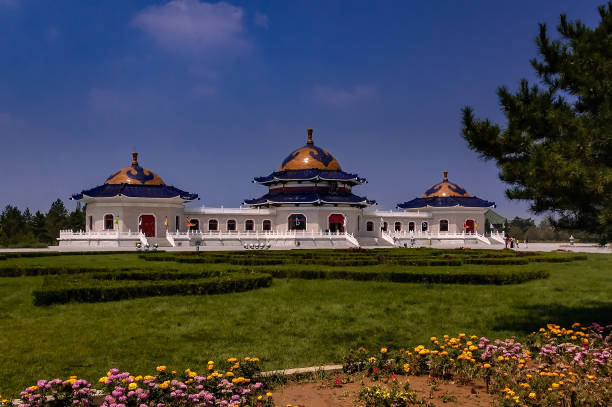
An Essential Guide to Visiting Mausoleum_Of_Genghis_Khan
Nestled in the sprawling Gande’er Grasslands of Inner Mongolia, the Mausoleum of Genghis Khan stands as a grand tribute to one of history’s most enigmatic figures. Although it is not the true resting place of the great conqueror—who is believed to have been buried in secret—this impressive complex serves as a cenotaph, commemorating his legacy and the reverence in which he is held by the Mongolian people.
Upon arrival, visitors are greeted by a striking statue of Genghis Khan on horseback, a fitting prelude to the rich history and culture that awaits inside. The mausoleum is adorned with intricate murals and exhibits that narrate the life and accomplishments of the legendary ruler, inviting travelers to immerse themselves in the tales of a man who forged the largest contiguous empire in history.
As you wander through the sacred halls, you’ll witness not just artifacts but also the living traditions of the Mongolian people, who come here to pay their respects. This is more than just a visit; it’s an opportunity to connect with the spirit of an era that shaped the course of civilization. Whether you’re a history enthusiast or simply in search of a unique cultural experience, the Mausoleum of Genghis Khan promises an unforgettable journey into the heart of Mongolian heritage.
In This Guide
- An Essential Guide to Visiting Mausoleum_Of_Genghis_Khan
- The Rich History and Legends of Mausoleum_Of_Genghis_Khan
- Main Highlights: What You Absolutely Can’t Miss
- Planning Your Visit: A Practical Guide
- Tickets: Prices, Booking, and Tips
- How to Get There: A Complete Transportation Guide
- Local Cuisine and Accommodation Nearby
- Frequently Asked Questions
- Final Thoughts on Your Trip
The Rich History and Legends of Mausoleum_Of_Genghis_Khan
Nestled within the breathtaking landscapes of Inner Mongolia, the Mausoleum of Genghis Khan stands as a testament to the enduring legacy of one of history’s most formidable figures. Despite the fact that Genghis Khan’s actual burial site remains a mystery—believed to be hidden as per his wishes—the mausoleum serves as a symbolic resting place and a site of reverence for Mongols and visitors alike.
The construction of the mausoleum began in the early 1950s, initiated by the People’s Republic of China in a bid to honor the great conqueror. The structure itself is a magnificent triple-domed building, reflecting traditional Mongolian architectural styles. The site is not merely a memorial; it embodies a rich tapestry of history and culture, with deep roots in Mongolian traditions that have been passed down through generations.
Legends tell of Genghis Khan’s death in 1227, after which he requested to be buried in a secret location, his body transported by a loyal band of warriors who eliminated any witnesses along the way. This act of loyalty and secrecy has contributed to the enduring mystery of his final resting place, as no one has conclusively identified his tomb. The mausoleum thus serves as a cenotaph, a place of honor where people can pay their respects to the legendary leader.
Within the mausoleum, visitors can explore a series of intricately organized exhibits that document the life and conquests of Genghis Khan. These spaces are adorned with stunning murals and frescoes that narrate the historical significance of his reign. While original artifacts are scarce due to the loss and theft over centuries, the mausoleum houses replicas of items once belonging to the Khan, including personal weapons and other relics.
The site is maintained by the Darhoot clan, a group reputedly descended from those who originally safeguarded Genghis Khan’s legacy. Their ongoing commitment to honoring the great Khan is evident in the ceremonial practices that take place at the mausoleum, where Mongolian locals and tourists alike gather to offer prayers and express their reverence.
As you wander through the grounds, you will encounter a colossal statue of Genghis Khan on horseback, a striking representation of his indomitable spirit. This impressive monument, alongside the mausoleum’s well-preserved architecture, encapsulates the grandeur befitting a leader who established the largest contiguous empire in history.
Visiting the Mausoleum of Genghis Khan is not just a journey into the past; it is an immersion into the rich cultural heritage of Mongolia. It invites travelers to reflect on the enduring influence of Genghis Khan, whose legacy continues to shape the identity of the Mongolian people today. Whether you are an avid historian or simply intrigued by legends of old, this site promises a profound experience steeped in history and reverence.

Mausoleum_Of_Genghis_Khan.
Main Highlights: What You Absolutely Can’t Miss
Visiting the Mausoleum of Genghis Khan is an unforgettable journey into the heart of Mongolian history and culture. Here are the main highlights that you absolutely can’t miss during your visit:
1. The Grand Entrance
As you approach the mausoleum, you’ll be greeted by a stunning triple-arched entrance that sets the tone for the grandeur that lies ahead. This impressive architectural feature leads you to the centerpiece of the memorial—a colossal statue of Genghis Khan on horseback. Standing tall, this statue captures the essence of the legendary conqueror and promises a memorable photo opportunity.
2. The Mausoleum Building
Step inside the mausoleum itself, which is beautifully organized and decorated with a series of rooms that narrate the life and legacy of Genghis Khan. Here, you can admire the meticulously crafted murals and frescoes that depict key moments from his storied past. Although photography is not allowed inside, the ambiance and exhibits will undoubtedly leave a lasting impression.
3. Cultural Significance
The mausoleum is not just a tribute to Genghis Khan; it is a sacred site for many Mongolians. You’ll have the chance to witness groups of visiting Mongols paying their respects through prayer in specially designated areas. This moment offers a profound insight into the living cultural heritage surrounding Genghis Khan and the importance of his legacy in contemporary Mongolian society.
4. Historical Artifacts
While the mausoleum does not contain Genghis Khan’s actual remains—his burial site remains a mystery—there are replicas of his personal artifacts on display. These items, which include a saddle and bow, are part of a collection that reflects the life of the great conqueror and his impact on history. Engaging with these relics provides a deeper understanding of Mongolian heritage.
5. Guided Tours
To truly appreciate the depth of history within the mausoleum, consider hiring an official guide available at the entrance. They will enrich your visit with captivating stories and insights, ensuring you don’t miss any significant points or details about the structures and their meanings. This is especially helpful if you’re unfamiliar with Mongolian history.
6. The Surrounding Grounds
After exploring the mausoleum, take time to wander the surrounding grounds, which include beautifully landscaped areas and additional monuments that honor Genghis Khan’s legacy. The setting in the Gande’er Grasslands adds a serene backdrop to your visit, making it perfect for reflection and relaxation.
7. Practical Tips
- Transportation: The mausoleum is about a two-hour taxi ride from Baotou. It’s advisable to negotiate a fixed fare beforehand to avoid inflated meter charges.
- Visitor Requirements: Don’t forget to bring your passport, as it is often required for entrance.
- Dress Appropriately: If visiting in the summer, be prepared for high temperatures and consider wearing a hat and sunscreen.
A visit to the Mausoleum of Genghis Khan is not just a chance to explore a significant historical site, but also an opportunity to connect with the rich cultural heritage of Mongolia. Make sure to take in every aspect of this remarkable tribute to one of history’s most iconic figures.
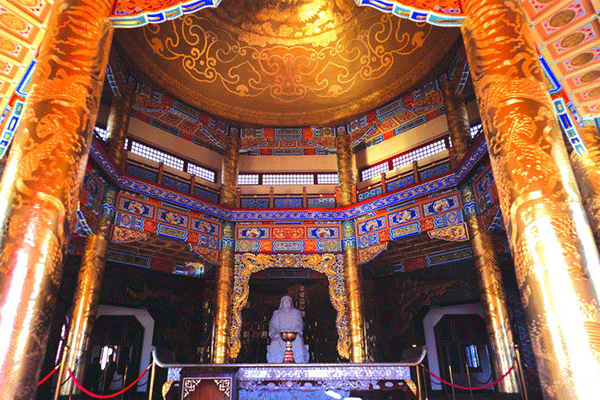
Mausoleum_Of_Genghis_Khan.
Planning Your Visit: A Practical Guide
Planning Your Visit: A Practical Guide to Genghis Khan’s Mausoleum
Visiting the Mausoleum of Genghis Khan, located in the heart of Inner Mongolia, is an extraordinary journey into the history of one of the world’s most legendary figures. This guide provides essential information to help you make the most of your visit.
Getting There
The mausoleum is situated about 2 hours from Baotou, the nearest large city. The most convenient way to reach the site is by taxi or rental car. If you’re coming from Dongsheng, expect a 2-hour drive for approximately ¥200 (around $30) or 1 hour from Dongsheng West Railway Station for about ¥100 ($15). It’s advisable to haggle a fixed fee with taxi drivers to avoid inflated meter charges.
Opening Hours
Plan your visit between 8:00 AM and 6:00 PM, any day of the week. It’s wise to arrive early to appreciate the expansive grounds and avoid the afternoon crowds.
Ticket Information
Entry to the mausoleum usually includes access to the surrounding park, where you’ll find a grand statue of Genghis Khan on horseback. Be sure to bring your passport, as it may be required when purchasing tickets.
What to Expect
The mausoleum is not Genghis Khan’s burial site—his actual tomb remains undiscovered—but it serves as a memorial park honoring his legacy. As you enter, you’ll be greeted by a stunning triple archway leading to the imposing statue of the Khan, which is a photographic highlight.
Inside the mausoleum, you’ll find a series of beautifully organized rooms showcasing murals, frescoes, and replicas of artifacts from the Khan’s era. Take note that photography is not permitted inside, so be prepared to soak in the atmosphere without your camera.
Guided Tours
While self-exploration is possible, hiring an official guide at the entrance can enhance your experience significantly. Guides can provide detailed insights into Genghis Khan’s life and the significance of various exhibits, ensuring you don’t miss any important stories or historical context.
Dress Code and Comfort
Given the location’s exposure to the elements, especially in summer, wearing a hat and sunscreen is recommended. Comfortable shoes are essential as there are 99 symbolic steps leading to the main temples, and exploring the grounds may involve some walking.
Nearby Attractions
Consider extending your stay in the area by visiting other nearby attractions, such as the ChengJiSiHan ShouLingDa ErHuTe MinSu ZhanLan, which is about 2 miles from the mausoleum. Engaging in organized tours that include multiple sites can also save you time and enhance your experience.
Tips for a Successful Visit
- Plan for Weather: Check the weather forecast before your visit. Summers can be extremely hot, while winters may be quite cold.
- Stay Hydrated: Bring water, especially if you plan to walk around the grounds.
- Respect Local Customs: As this site holds significant cultural importance, be mindful of local customs and practices, especially in prayer areas.
- Explore Local Cuisine: After your visit, indulge in local Mongolian cuisine. Restaurants in Baotou offer a variety of dishes that can enhance your cultural experience.
Conclusion
The Mausoleum of Genghis Khan offers a unique glimpse into the life and legacy of one of history’s most formidable leaders. By planning ahead and embracing the local culture, you’ll leave with unforgettable memories of your journey into Mongolia’s rich history.
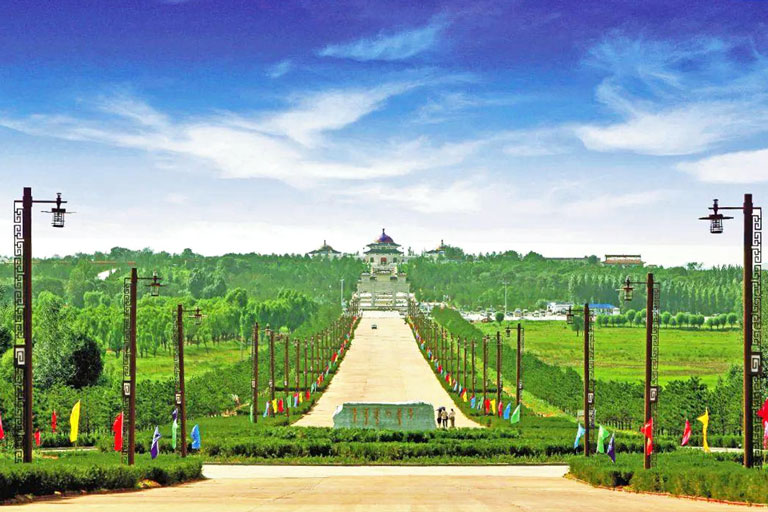
Mausoleum_Of_Genghis_Khan.
Tickets: Prices, Booking, and Tips
Visiting the Mausoleum of Genghis Khan is a remarkable journey into the heart of Mongolian history and culture. Here’s everything you need to know about tickets, prices, and some handy tips to enhance your experience.
Ticket Information and Pricing
-
Admission Fee: The standard ticket price for adults is approximately ¥80 (Chinese Yuan). Children and students may receive discounted rates, so it’s worth inquiring at the ticket office.
-
Opening Hours: The mausoleum is open daily from 8:00 AM to 6:00 PM. Aim to arrive early to avoid crowds and make the most of your time exploring the exhibits.
-
Guided Tours: Visitors are highly encouraged to hire a local guide to enrich your understanding of Genghis Khan’s life and the significance of the site. Guides are available at the entrance and can typically be arranged for about ¥100-¥200, depending on the duration and group size.
Booking Tips
-
Advance Booking: While tickets can often be purchased on arrival, during peak tourist seasons, it’s advisable to book in advance, especially if you’re part of a larger group. Some local agencies offer combined tour packages that include transportation, meals, and a guide.
-
Transportation: The mausoleum is located about 2 hours from Baotou city. Taxis are available, but negotiate a fixed fare before starting your journey—expect to pay around ¥200 from the city center. Alternatively, consider renting a car for more flexibility.
-
Bring Your Passport: You’ll need to show your passport at the entrance, so don’t forget to bring it along.
Tips for an Enjoyable Visit
-
Dress Appropriately: The site can get very hot during the summer months, so wear light clothing and a hat. Comfortable shoes are also essential, as you’ll be walking and climbing steps to explore the area.
-
Photography Restrictions: Be aware that photography is not allowed inside the mausoleum itself, so take your time to appreciate the stunning murals and artifacts without the distraction of your camera.
-
Respect the Culture: This site is a place of reverence for many, particularly for the Mongolian people. Be mindful of the local customs and the significance of the memorial.
By following these guidelines, your visit to the Mausoleum of Genghis Khan will be a memorable and enriching experience, allowing you to connect deeply with the legacy of one of history’s most fascinating figures. Safe travels!
How to Get There: A Complete Transportation Guide
Reaching the Mausoleum of Genghis Khan, located in the scenic Gande’er Grasslands of Baotou, Inner Mongolia, is an adventure that combines convenience and a touch of historical exploration. Here’s a comprehensive guide to help you navigate your way to this iconic site.
By Air
The nearest major airport is Baotou Airport (BAV), which is approximately 90 kilometers away from the mausoleum. Several airlines operate flights to Baotou from major Chinese cities like Beijing, Shanghai, and Guangzhou. Upon arrival, you can choose from the following options:
- Taxi: The quickest way to reach the mausoleum is by taking a taxi directly from the airport. Expect the journey to take about 1.5 to 2 hours, costing around ¥300-¥400. Be sure to negotiate the fare before starting your trip.
- Car Rental: For those who prefer flexibility, renting a car at the airport is a viable option. This allows you to explore the stunning landscapes of Inner Mongolia at your own pace.
By Train
If you’re traveling from Beijing or other major cities, consider taking a train to Baotou Railway Station. The train journey offers a scenic route and can be more economical than flying. Once you arrive at the station, you have a couple of options to reach the mausoleum:
- Taxi: Taxis are readily available at the railway station. The trip to the mausoleum will take around 1 to 1.5 hours, and fares typically range from ¥100-¥200, depending on your negotiation skills.
- Guided Tours: Some travel agencies offer package tours that include transportation from Baotou Railway Station to the mausoleum, along with guided services. This option is excellent for those who want a hassle-free experience.
By Bus
For budget-conscious travelers, buses from Baotou to the mausoleum area run regularly, although schedules may vary. This option is less direct and usually involves a transfer at a nearby town. It’s advisable to check local bus schedules or consult with your hotel for the latest information.
Local Transportation
Once you arrive at the mausoleum, the site itself is expansive, and walking is the primary mode of exploration. However, if you find the grounds too large, consider hiring a local guide or a golf cart for a more comfortable experience.
Tips for Your Visit
- Bring Your Passport: It’s necessary to show your passport when purchasing tickets at the entrance.
- Stay Hydrated: Especially during the summer months, the temperature can soar. Carry water and wear sunscreen.
- Dress Appropriately: Comfortable shoes are recommended, as you’ll be doing quite a bit of walking, including climbing the symbolic 99 steps to the main temples.
With these transportation options and tips, you’re all set to embark on your journey to the Mausoleum of Genghis Khan, where history and reverence converge in a picturesque setting. Enjoy your visit!
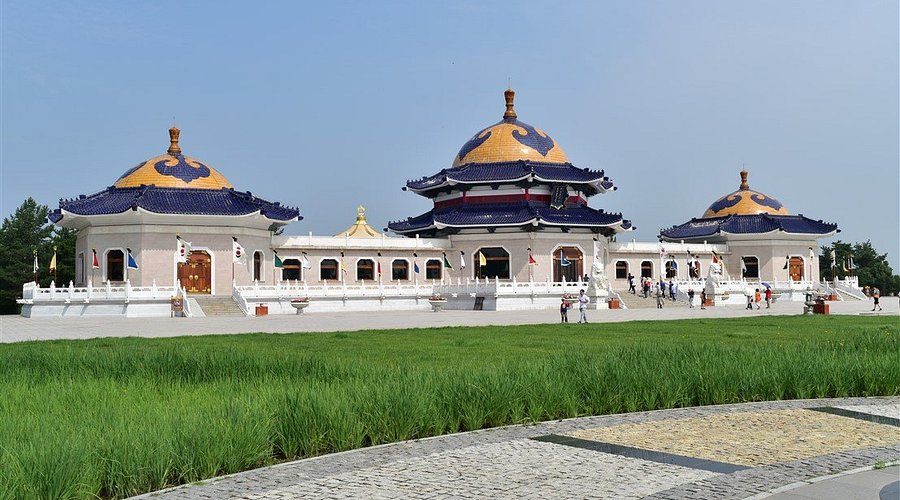
Mausoleum_Of_Genghis_Khan.
Local Cuisine and Accommodation Nearby
When visiting the Mausoleum of Genghis Khan, you’ll find that the surrounding area of Ordos offers a delightful culinary scene and a variety of accommodation options that cater to international travelers. Here’s a guide to help you enjoy both local flavors and comfortable stays during your visit.
Culinary Delights
1. Local Mongolian Cuisine:
Indulge in the rich flavors of Mongolian cuisine, which is heavily influenced by the region’s nomadic traditions. A must-try dish is buuz, steamed dumplings filled with minced meat, often served with a side of soup or salad. Another popular option is khuushuur, a deep-fried meat pie that makes for an excellent snack as you explore the area.
2. Restaurants to Visit:
– Huang He Lou (黄河楼): Located just a short drive from the mausoleum, this restaurant specializes in traditional Mongolian dishes with a modern twist. Be sure to try their grilled lamb skewers and milk tea.
– Da Zha (大炸): Known for its lively atmosphere, this eatery serves delicious roast lamb and a variety of local specialties. The restaurant’s decor reflects Mongolian culture, making it a great spot for a unique dining experience.
– Khan’s Barbecue (汗烧烤): Perfect for meat lovers, this barbecue joint offers a variety of grilled meats and fresh salads. The casual setting is ideal for unwinding after a day of sightseeing.
Accommodation Options
1. Hotels:
– Ordos International Hotel: This upscale option is conveniently located near the mausoleum. It offers modern amenities, including free Wi-Fi, a fitness center, and an on-site restaurant serving a blend of Chinese and Western dishes.
– Hilton Ordos: For a luxurious stay, consider the Hilton, which boasts spacious rooms and stunning views of the surrounding grasslands. The hotel features a full-service spa and multiple dining options, including a buffet with local and international cuisine.
2. Guesthouses:
– Mongolian Yurt Stay: For a more immersive experience, consider staying in a traditional yurt. This guesthouse provides a unique opportunity to experience nomadic life while enjoying local hospitality. Enjoy hearty meals prepared with fresh ingredients and take part in cultural activities.
– Yijinhuoluo Country Inn: A cozy option for budget travelers, this inn offers clean rooms and a friendly atmosphere. The staff can provide information about local attractions and help arrange transportation.
Final Tips
Don’t forget to sample some local milk tea and airag (fermented mare’s milk) during your stay for an authentic taste of Mongolian culture. With a range of dining and accommodation options nearby, you can fully immerse yourself in the history and traditions surrounding the Mausoleum of Genghis Khan. Enjoy your journey through this fascinating part of Inner Mongolia!
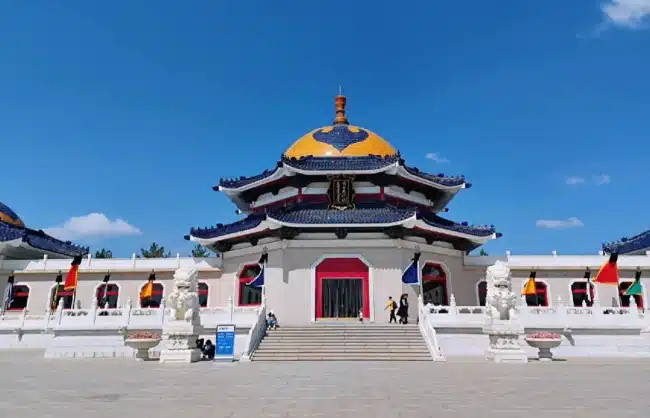
Mausoleum_Of_Genghis_Khan.
Frequently Asked Questions
Frequently Asked Questions
-
What are the opening hours for Genghis Khan’s Mausoleum?
The mausoleum is open daily from 8:00 AM to 6:00 PM. Make sure to plan your visit accordingly, as the site may close early during certain holidays. -
Is there an entry fee?
Yes, there is an entry fee to visit the mausoleum. It’s advisable to bring cash, as card payments may not be accepted. -
How do I get to Genghis Khan’s Mausoleum from Baotou?
The best way to reach the mausoleum is by taxi or rental car, which takes about 2 hours. Haggling for a fixed fare with taxi drivers is recommended to avoid inflated meter charges. -
Are there guided tours available?
Yes, guided tours are available and highly recommended. An official guide can provide valuable insights into the history and significance of the mausoleum and its exhibits. -
Can I take photographs inside the mausoleum?
Photography is not allowed inside the mausoleum to preserve the sanctity of the exhibits. However, you can take plenty of pictures in the surrounding areas. -
What should I wear when visiting?
Dress comfortably and consider the weather, as summers can be very hot. A hat and sunscreen are advisable. Also, wear comfortable shoes for exploring the site, which includes climbing steps. -
Are there facilities available at the mausoleum?
Yes, there are restroom facilities and a souvenir shop where you can purchase memorabilia. It’s a good idea to bring water, especially during the warmer months. -
Is Genghis Khan actually buried here?
No, Genghis Khan’s actual burial site remains unknown. The mausoleum serves as a cenotaph, honoring his legacy and allowing visitors to pay their respects in a symbolic manner.
Final Thoughts on Your Trip
As your journey through the majestic landscapes of Inner Mongolia comes to a close, a visit to Genghis Khan’s Mausoleum offers not only a glimpse into the life of one of history’s most formidable leaders but also an opportunity to reflect on the profound cultural heritage of the Mongolian people. This awe-inspiring memorial, marked by its striking architecture and solemn atmosphere, stands as a testament to the enduring legacy of Genghis Khan—a legacy that continues to resonate with visitors from around the world.
While the mausoleum may not be his final resting place, it encapsulates the spirit of reverence that surrounds this iconic figure. The meticulously curated exhibits and the dedicated guardians who maintain them invite you to step back in time, immersing you in tales of conquest, resilience, and honor. Whether you marvel at the grand statue welcoming you at the entrance or contemplate the artifacts that shaped the Mongol Empire, each moment spent here serves to deepen your appreciation of history.
As you prepare to depart from this sacred site, carry with you the stories shared by knowledgeable guides and the respect shown by fellow visitors. The experience is not merely a visit to a monument; it is a connection to a culture that values its past and honors its heroes. So, whether you are an avid history buff or a curious traveler, the Mausoleum of Genghis Khan promises to leave an indelible mark on your journey. Embrace the memories, and let the echoes of Mongolia’s rich heritage inspire you long after you’ve left its windswept plains.